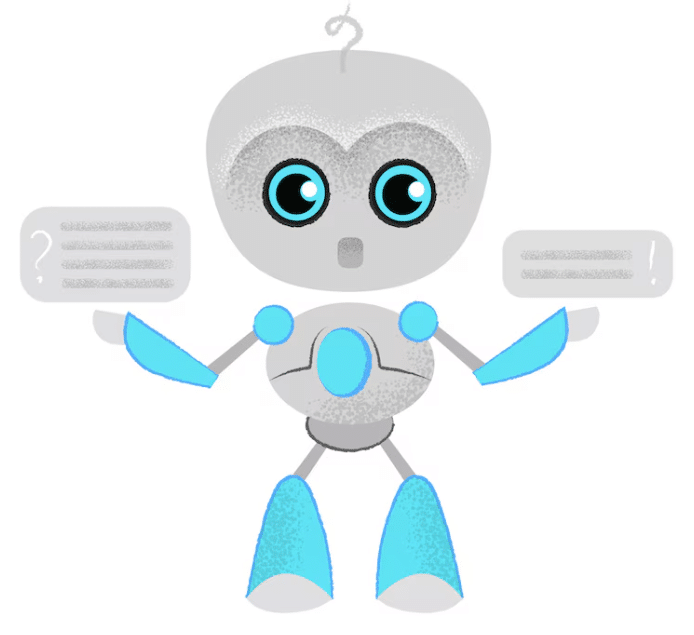There’s a lot that goes into crafting and maintaining a comprehensive ongoing SEO strategy, but some factors are better understood than others.
For instance, everyone knows how important keyword research is. Plus, even newcomers have a basic understanding of the significance of a solid backlink portfolio or a blog filled with high-quality content.
However, duplicate content is another matter entirely. While people know duplicate content isn’t ideal most of the time, not everyone is clear on why it’s an SEO issue or what to do about it.
Here, we’ll cover everything you need to know to navigate these issues and stay ahead of the curve.
What is Duplicate Content?
Duplicate content is essentially what it sounds like — it’s content that is identical or very similar and exists in more than one place on the internet.
Duplicate content might involve a piece of content that’s shared across multiple websites or online platforms, such as a blog post that an author shares across different platforms to reach a wider audience.
However, individual websites can also face internal issues with duplicate content, where identical sections of page copy appear on several similar (but ultimately separate) service pages.
In any case, duplicate content can be either intentional or unintentional.
Is Duplicate Content Bad for SEO?
Even though Google does expressly advise against creating duplicate content, it also tells users that it won’t exactly destroy their hard-earned search engine rankings, either.
Generally speaking, Google’s algorithm does a decent job of figuring out which page out of many containing the same or similar content should actually rank.
But this system isn’t perfect. Too much duplicate content within a website (or on the web, in general) can confuse search engines, and the wrong page does occasionally rank over the right one.
This can lead to SERP results that aren’t as accurate as they should be, which can frustrate users, hurt your traffic, and raise bounce rates.
Also, crawl bots only spend a certain amount of time on each website they visit. Too much duplicate content within a given site can waste the bots’ time and potentially keep your best content from being indexed.
So, duplicate content is not always bad for SEO, but it must be approached carefully.
Internal Duplicate Content Issues
Internal duplicate content issues arise within a single website, such as an e-commerce store or a large informational website. While they can sometimes result from intentional content reuse, they’re often accidental.
Here are some common examples to keep in mind.
Product Descriptions
Crafting hundreds, if not thousands, of unique descriptions for products that are frequently very similar to one another can be seriously challenging.
It’s also time-consuming, so the temptation to reuse individual snippets from page to page (or fall back entirely on the manufacturer’s descriptions) is pretty great.
However, originality is crucial if you’re serious about ranking for direct searches on any of the products you stock, especially if many other sites are selling the same items. And, of course, pay attention to best practices on how to write efficient product descriptions.
If you need help crafting product descriptions, consider partnering with WriterAccess. With a network of skilled writers, WriterAccess can help you generate high-quality, original product descriptions tailored to your specific needs.
Say goodbye to duplicate content worries and hello to engaging, SEO-friendly descriptions that set your products apart from the competition.
Meta Elements
Although most website owners know not to have the same written content on multiple pages, more than a few wind up overlooking additional on-page elements and metadata.
Every page on your website should have its own unique page title and meta information.
You’ll also want to take care not to reuse any of your headings from page to page. Ultimately, elements like these don’t constitute much of the actual content on a page, but it’s better to be safe than sorry.
URL-Related Issues
Another very common culprit when it comes to internal problems with duplicate content is the potential for variations on a specific URL.
Some examples of how issues like this may look on your site include:
- Variations with and without a trailing slash on the end
- Some that start with http and https
- Variations that start with and without www
There are no known SEO benefits to choosing any one of these options over the other, so which way you go is entirely up to you. But you do want to remain consistent to avoid SEO issues.
If your website uses URL parameters to generate page variations for products of different colors or sizes (to name just two possibilities), this can also lead to problems with proper indexing.
Blog Posts
Duplicated blog posts are another example of internal duplicate content. This happens when similar or identical blog content is posted on multiple pages within the same website.
For example, if you publish a blog post about “10 Tips for Healthy Eating” and later repost the same content under a slightly different title, it can create duplicate content issues.
SEO Impact: Duplicate blog posts can hurt your SEO strategy because search engines might struggle to determine which version of the content is most relevant. This can dilute your search rankings and reduce the visibility of your content.
SEO Benefit: On the flip side, duplicating blog content can help you target different keywords and audience segments. However, it’s crucial to use canonical tags to indicate the primary version of the content and avoid SEO penalties.
External Duplicate Content Issues
Of course, not all duplicate content problems are internal. Any website or content producer with much original content of value to their name will likely eventually see some of it republished, either with or without permission.
Here are some examples of external duplicate content situations to know.
With Permission: Syndicated Posts
Occasionally, every content producer will come across opportunities to syndicate (or republish) their content with another publication or website.
You may do this on your own, as with electing to repost a popular post (or a portion of it) to a secondary blog on a platform like Medium or Quora.
Alternatively, you might receive requests from third-party publications asking to syndicate your content.
Although this may seem like a bad idea if you’re trying to avoid duplicate content, syndication can actually help you. Not only does it make you and your brand more visible, but backlinks to your site can send extra traffic your way, too.
Without Permission: Scraped Content
Unfortunately, most content creators and brands will eventually become acquainted with content scrapers.
Scraped content occurs when another website owner or content creator decides to steal your content and repost it on their own without permission.
Although this is naturally an attempt on the thief’s part to give their own site a visibility boost, it often backfires.
To begin with, scraped content is usually very easy to spot. There are also serious penalties for deliberately trying to manipulate Google’s algorithm and search rankings in this way.
If you do find you’ve become the victim of content scraping, you should report the offending site to Google as soon as possible.
How to Check for Duplicate Content
Again, although duplicate content isn’t necessarily going to be the factor that makes or breaks your SEO campaign, it is something you want to stay on top of to avoid any potential issues.
This is the case for both internal and external issues with duplicates. Here are some key tips to keep in mind for dealing with both.
1. Add a duplicate content check to your SEO audit
If you’re not yet regularly auditing your website for potential SEO issues, it’s officially time to start. And if you are already doing it, make sure you add a duplicate content check to your ongoing routine.
Although there are several ways to check your site for duplicate or near-duplicate content, there are tools out there that take a lot of the guesswork and tedium out of the process.
For example, Copyscape’s Siteliner tool does this very quickly and displays your results in a way that makes it easy to spot problems at a glance.
2. Try running an exact match search on Google
You’ll also want to perform regular checks for unauthorized copies of your content elsewhere on the web.
One way to do this is by using Google to perform what’s known as an exact match search.
Navigate to a page you’d particularly like to check. Copy a few sentences and paste them directly into Google within a set of quotation marks.
This directs Google to return only results that contain that exact text. So if anything happens to come up, then you’ve officially got a content scraper or plagiarist on your hands.
3. Run your content through Copyscape
Copyscape is a must-know tool to have in your back pocket if you’re serious about staying on top of duplicate content issues.
As with Google exact match searches, using Copyscape to scan a chunk of text from one of your pages will immediately reveal any copies out there on the web.
The best course of action if you do know for sure that someone has maliciously scraped or otherwise plagiarized your content is to make Google aware of the issue by filing a complaint.
However, you can also contact the site owner directly first if you’re not sure, as they may not realize they’ve published stolen content.
If the site is high in quality or authority, you can consider allowing the site owner to leave the content up if they add a backlink to your site, as well.
And, of course, use tools like Copyscape regularly to ensure any scrapers are dealt with promptly. The sooner you can take care of a potential problem, the less of an impact it could potentially have on your SEO.
When Duplicate Content Can Be Beneficial for SEO?
Duplicate content can be beneficial for SEO in certain contexts, primarily when it helps to:
1. Target Different Keywords
If you have content that can be relevant to multiple search queries, slightly modifying the content and targeting different keywords can help attract various segments of search traffic. This approach can help you reach a broader audience.
2. Improve User Experience
Providing similar content in different formats or structures can enhance user experience. For example, having a detailed blog post and a summarized infographic on the same topic can cater to different user preferences, keeping visitors engaged on your site.
Another example is creating a video based on a blog post.


3. Distribute Content Across Multiple Platforms
Republishing your content on different platforms, such as Medium or LinkedIn, can help you reach a wider audience. While this creates duplicate content, using canonical tags ensures that search engines recognize the original source and direct SEO benefits there.
4. Manage Multiple Regional Sites
If you operate in different regions with similar content but need to cater to local SEO, having duplicate content with regional adjustments (like language, currency, contact details, and local regulations) can be beneficial. This allows each site to rank well in its respective region.
Best Practices
- Use Canonical Tags: Indicate the preferred version of a page to search engines, helping avoid penalties.
- Implement Hreflang Tags: For multilingual sites, hreflang tags help search engines understand which language and region to serve the content in.
- Syndicate Wisely: If republishing on third-party sites, ensure the syndicated content links back to the original and uses canonical tags to attribute the original source correctly.
By using these strategies, you can leverage duplicate content to enhance your SEO efforts without negatively impacting your search engine rankings.
Duplicate Content FAQs (Frequently Asked Questions)
What is the meaning of duplicate content?
Duplicate content refers to content that is either identical or very similar and exists in more than one location on the internet. This can occur within a single website or across multiple websites.
Can Google penalize you for duplicate content?
Yes, Google can penalize websites for duplicate content, as it may affect the quality of search results for users. While Google may not always penalize sites directly, it can impact search rankings and visibility, leading to decreased traffic and potential penalties.
What is an example of duplicate content?
An example of duplicate content is when the same article or webpage is published on multiple websites without any significant changes. This can also occur within a single website if identical or very similar content is found on multiple pages.
Wrap Up
While primary keywords, backlinks, streamlined website optimization, and so forth will always be the most critical concerns for SEO, there’s no such thing as “too thorough.”
Staying on top of potential issues with duplicate content is one terrific way to fortify your efforts, but it’s not the only one.
For a comprehensive approach to your content strategy, consider partnering with WriterAccess.
With a team of experienced writers, WriterAccess can help you create unique and engaging content that resonates with your audience while avoiding duplicate content pitfalls.
Take your SEO efforts to the next level and sign up for a 14-day free trial of WriterAccess today.









